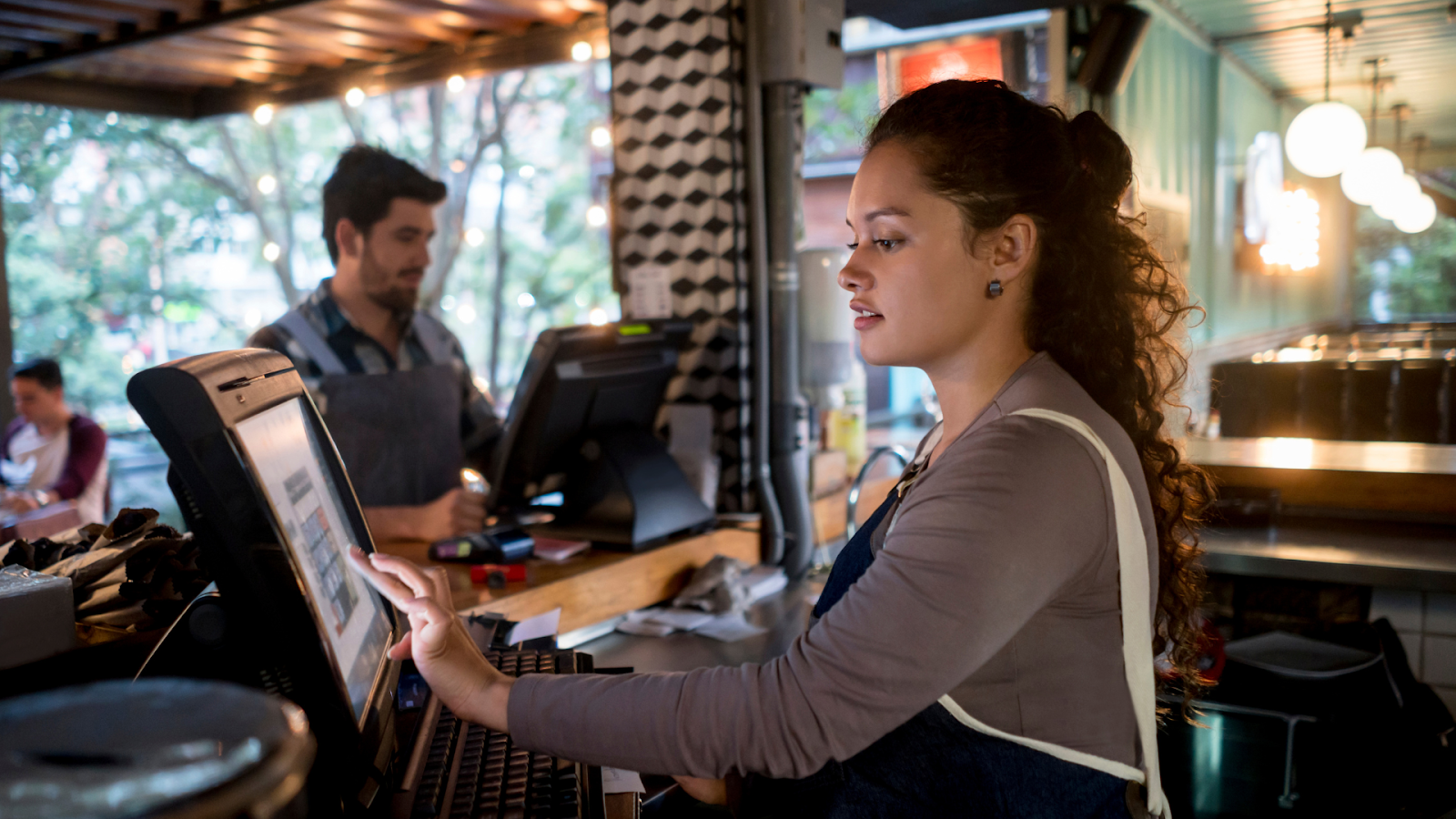July 2, 2025

Running a successful restaurant isn't just about culinary passion; it's a relentless pursuit of profitability.
In Canada, the average operating margin for restaurants hovers around 3.8%, with bars slightly higher at 4.7%. For every $100 a Canadian restaurant earns, only about $3.80 to $4.70 typically translates into profit. This stark reality of razor-thin margins, further challenged by rising food inflation, underscores the critical importance of understanding your average restaurant profit per month.
This article will examine restaurant profits, breaking down their core components and unveiling proven strategies to optimize menu pricing, cut overhead, and utilize smart technology to significantly boost your bottom line.

When discussing a restaurant's financial health, average monthly profit refers to the amount of revenue remaining after subtracting all expenses. It's a key metric for restaurant owners to monitor, as it indicates whether the business is sustainable, profitable, or in need of adjustments.
The formula for calculating monthly profit is straightforward:
Revenue - Costs = Profit
However, breaking down the costs is where the complexity lies. Several key factors determine how much of the revenue becomes profit:
The balance between revenue and costs is critical. Even if a restaurant generates high revenue, if costs are too high, the profit margin can be extremely thin. A well-optimized operation focuses on reducing unnecessary costs and maximizing revenue through customer retention and efficient management.
Now that we've explored the basics of restaurant profits, let's look at the factors that influence these margins, from costs to external challenges.

Restaurant profit margins can vary significantly due to several factors. Some are within your control, while others depend on external conditions. Recognizing these factors is crucial for spotting opportunities to boost profitability.
Labor is a significant expense for restaurants, accounting for 30% of revenue, including wages, benefits, and training. Maintaining a well-trained staff while controlling costs is key for profitability. During busy hours, efficient labor management is crucial to sustain service quality.
Labor costs vary with local wages and laws. Restaurants often face scheduling challenges, leading to understaffing (affecting service) or overstaffing (increasing costs).
Food and beverage costs, or COGS, should be 25-35% of revenue. Issues such as food waste, portion control, menu pricing, supply chain problems, and underperforming items can increase this percentage.
Effective COGS management is vital. Practices like portion control, inventory tracking, and waste reduction help keep ingredient costs below revenue. Monitoring sales and adjusting menu items based on demand ensures you buy only what's needed, reducing waste.
Fixed costs, such as rent, utilities, insurance, and other operational expenses, are unavoidable. However, smart strategies can help cut these costs.
For instance, negotiating better rental terms or utilizing energy-efficient equipment can help lower overhead. Managing overhead also involves optimizing restaurant space by redesigning layouts to eliminate underutilized areas and implementing digital ordering systems to minimize paper and supply usage.
Several external factors can significantly impact your restaurant's profit margins:
Adjusting to external factors requires careful balancing and consideration. For instance, a restaurant can capitalize on seasonal trends by offering promotions or introducing new menu items. Responding swiftly to economic changes, such as adjusting prices or providing budget options, helps maintain customer traffic.
A well-designed menu matches customer preferences and boosts profits. High-profit items, such as specialty drinks or signature dishes, enhance earnings. Offering varied pricing tiers, such as premium and budget options, attracts a diverse range of customers.
Menu optimization isn't just adding popular items; it balances profitability with satisfaction. Regular updates based on trends, preferences, and costs keep offerings relevant and profitable.
Now, let's take a closer look at typical profit margins across North American restaurants to understand where your business stands in comparison.

Understanding the average profit margins across different types of restaurants can provide valuable insights into industry standards and help set realistic financial expectations.
Here are some key statistics:
These figures represent averages and vary according to factors such as location, management, and market conditions. For example, well-managed restaurants in busy areas may have higher profit margins, while those with high rent or fewer customers might have lower margins.
Now, let's break down the process to calculate your restaurant's average monthly profit.
Calculating your restaurant's average monthly profit is essential for understanding your financial health and making informed decisions. It helps you identify areas that need improvement and evaluate the success of your operational strategies.
Here's a simple breakdown of how to calculate your restaurant's average monthly profit.
The first step is to determine your total revenue, which includes all income generated from your restaurant's operations.
Formula: Total Revenue = Food & Beverage Sales + Delivery & Catering + Other Income
COGS represents the direct costs associated with producing the food and beverages you sell.
Formula: COGS = Cost of Ingredients + Packaging Costs
Operating expenses encompass all the costs required to operate the business on a daily basis. These expenses are typically fixed (such as rent) or variable (such as utilities).
Common operating expenses include the following items:
Formula: Operating Expenses = Labor Costs + Rent & Utilities + Marketing & Advertising + Supplies & Maintenance
Once you have your revenue, subtract both COGS and operating expenses to get your gross profit.
Formula: Gross Profit = Total Revenue - (COGS + Operating Expenses)
Finally, to determine your net profit, you must account for any additional costs such as taxes, interest on loans, and one-time expenses (e.g., repairs or equipment purchases). After all these deductions, the amount left is your net profit.
Formula: Net Profit = Gross Profit - (Taxes + Interest + One-Time Expenses)
Let's say a restaurant earns $50,000 in total revenue per month. Here's how it would break down.
These figures are for a single month. The same restaurant makes profits of $15,000 and $18,000 in the upcoming months.
Average Monthly Profit: ($13,000 + $15,000 + $18,000) / 3 = $46,000 / 3 = $21,000
Calculating your restaurant's profit can be tedious, especially tracking revenue and costs.
iOrders simplifies this by integrating with your POS system to track sales, automate orders, and provide real-time data on food costs and delivery expenses. This automation and data-driven approach makes it easier to calculate monthly profits and identify areas for increasing efficiency and margins.
Next, let's focus on actionable strategies that can help you maximize monthly profit and enhance your restaurant's financial health.

Maximizing your restaurant's monthly profit requires a combination of operational efficiency, customer engagement, and strategic financial management. Here are eight proven strategies to help boost your restaurant's profitability:
Your servers influence customer spending significantly. Proper sales training helps them upsell, increase order sizes, and boost satisfaction. Training staff to suggest high-margin items and improve product knowledge can directly increase revenue.
Effective marketing is vital for attracting new customers and encouraging repeat business. A solid plan combines online and offline strategies, such as social media, local partnerships, and promotions, to boost brand recognition.
Maximizing table turnover is a key strategy to increase profitability. The faster customers are served without compromising the dining experience, the more customers you can serve.
Food waste is one of the biggest profit killers in the restaurant industry. Minimizing waste not only saves money but also improves your environmental footprint.
Regularly updating your menu layout and pricing strategy can greatly improve your restaurant's profitability. Well-designed menus emphasize high-margin items and strategically steer customers toward profitable choices.
Labor costs can fluctuate depending on demand. Efficient employee scheduling helps ensure that you're neither overstaffed nor understaffed during peak times, which can either result in wasted labor costs or negatively impact service quality.
Reducing your utility costs can have a significant impact on your bottom line, especially if your restaurant operates long hours. Small adjustments can lead to big savings in the long run.
Regular financial reviews are crucial to ensure your restaurant remains on track to meet its profit objectives. Regular analysis of profit and loss (P&L) statements, sales reports, and expenses can help identify areas for improvement.
iOrders helps in implementing these strategies with a comprehensive suite of tools. Whether it's managing orders, optimizing delivery services, or analyzing sales data, it supports you in maximizing your restaurant's potential.
Let's see how iOrders can simplify your work.

Running a successful restaurant involves not just providing excellent food but also efficiently managing a range of operational and financial aspects. Here's how iOrders can help your restaurant flourish.
Third-party platforms often charge hefty commission fees, sometimes as high as 30% per order. iOrders offers a commission-free online ordering system that allows restaurants to retain full control over their orders and customer interactions. It helps eliminate the cost burden from third-party apps, directly boosting your profit margins.
Allowing customers to order via the restaurant's website or white-label app helps restaurants keep more revenue, control customer experience and data, build relationships, and gain insights into customer behavior.
iOrders integrates with both in-house delivery teams and third-party logistics partners, such as DoorDash or Uber Eats. Restaurants can choose their preferred delivery method, either using their drivers or outsourcing to delivery services, while still maintaining full control over the customer experience.
Delivery-as-a-Service enables restaurants to offer delivery without hiring drivers, significantly reducing operational costs. It ensures that customers see only the restaurant's branding, maintaining consistency and brand recognition.
Managing orders across multiple platforms and services can be cumbersome, leading to mistakes, delays, and confusion. iOrders centralizes all orders, whether for dine-in, takeout, or delivery, into a single dashboard, simplifying order tracking and reducing errors.
It also allows restaurant managers to oversee operations from a single platform, making it easier to identify areas for improvement and streamline procedures.
iOrders provides actionable insights based on customer behavior, sales patterns, and operational data. It allows restaurant owners and managers to make informed decisions, from menu adjustments to pricing strategies.
iOrders analyzes customer data to identify top-performing menu items, enabling pricing and inventory optimization. Its Smart marketing campaigns target specific customer segments, boosting retention and repeat business.
Customer retention costs less than attracting new clients. iOrders' loyalty programs reward repeat business with discounts, points, or exclusive offers, increasing visits and customer lifetime value.
Offering incentives encourages customers to return, helping build a loyal customer base, which is essential for long-term success. The program is fully customizable, allowing restaurants to tailor rewards to their specific goals and customer preferences.
With these features, iOrders empowers restaurants to make smarter, more profitable decisions.
Let's examine the mistakes that harm restaurant profits and how to avoid them.
Running a restaurant requires making many strategic decisions, but it's equally important to avoid common mistakes that can hurt profits. Here are some of the most common missteps that can impact your restaurant's bottom line, along with strategies to prevent them.
With real-time data, streamlined operations, and targeted marketing, iOrders helps restaurant owners prevent costly errors and make informed decisions, ultimately boosting profits.
Maximizing your restaurant's monthly profit requires a strategic approach to cost management, customer retention, and operational efficiency. By optimizing menu pricing, managing food and labor costs effectively, and utilizing technology to streamline operations, you can significantly enhance your profitability.
iOrders offers a comprehensive suite of tools to eliminate third-party fees, streamline delivery, and enhance customer loyalty, providing you with everything needed to increase your average monthly profit.
Take control of your restaurant's profitability today. Contact iOrders and see how we can help you achieve your financial goals.